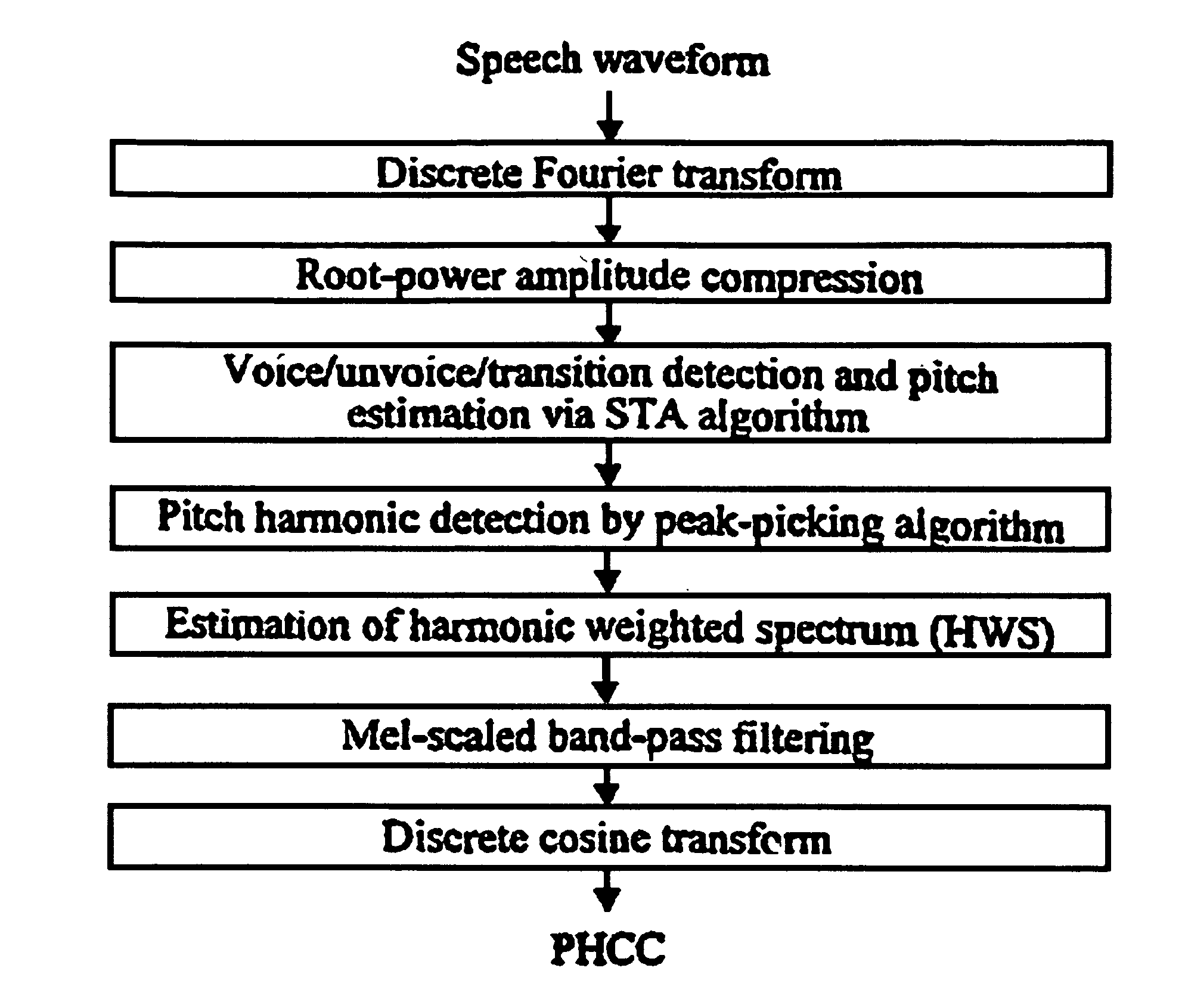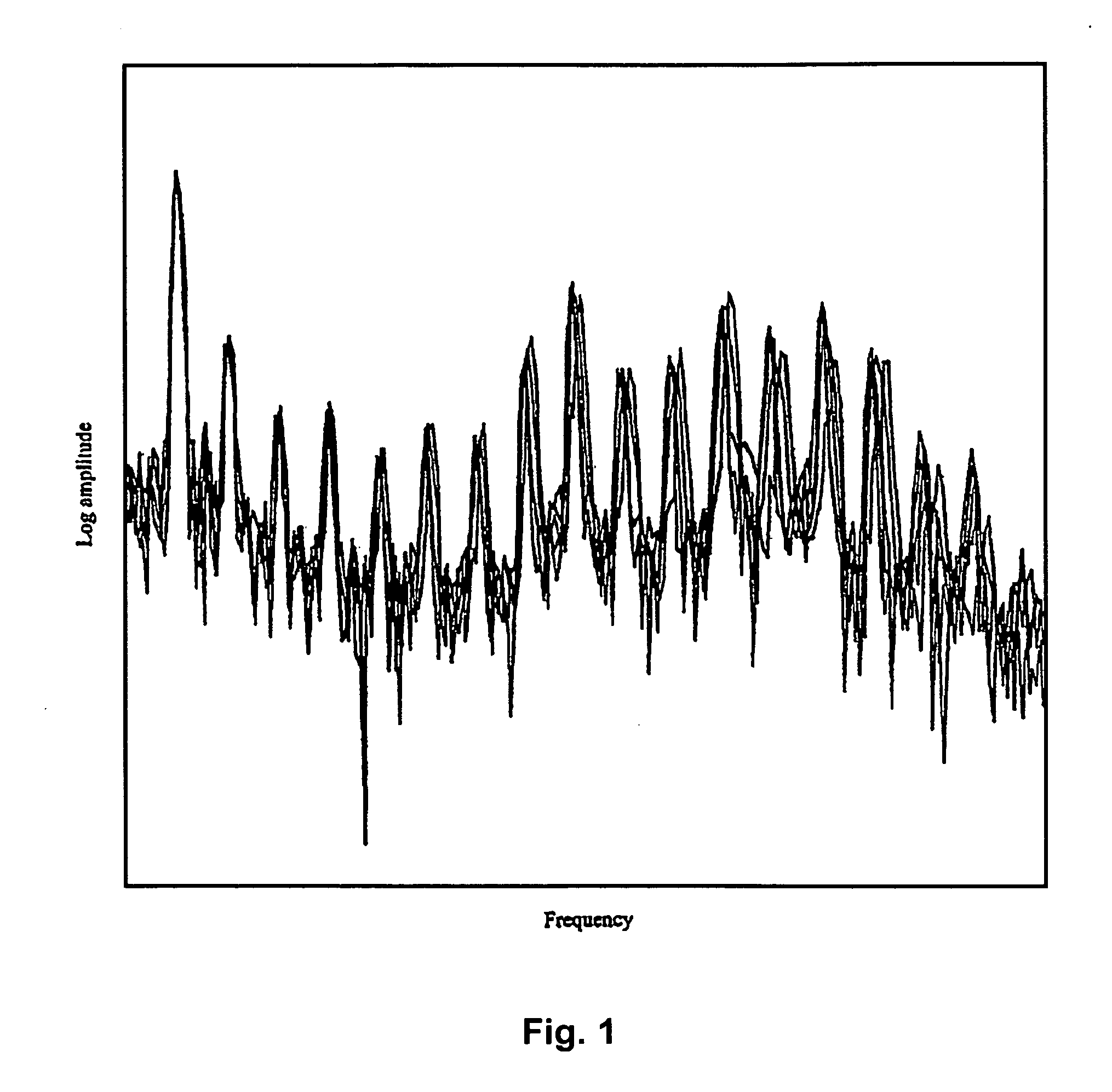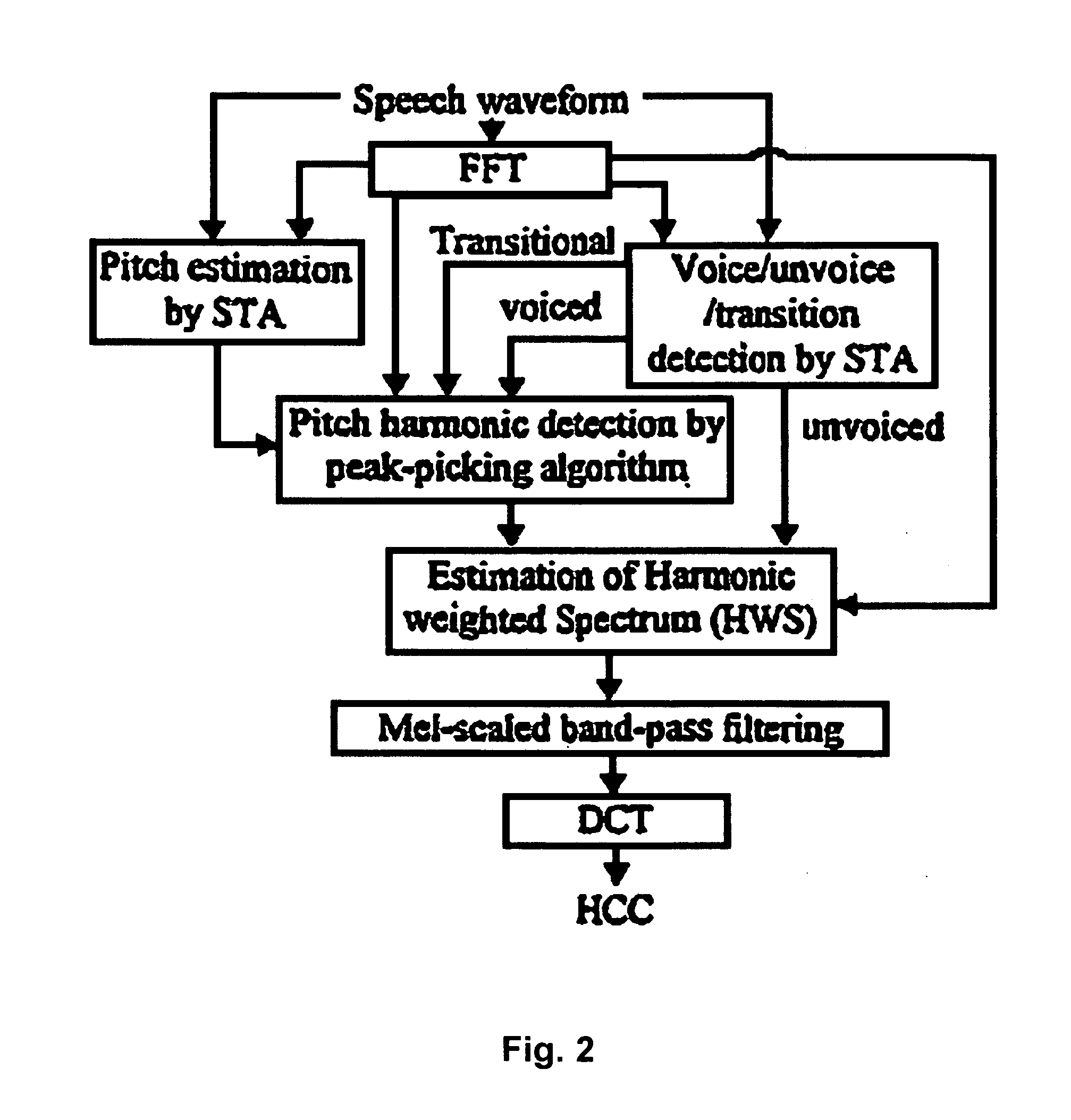Perceptual harmonic cepstral coefficients as the front-end for speech recognition
a perception harmonic and cepstral coefficient technology, applied in speech recognition, speech analysis, instruments, etc., can solve the problems of noisy speech, noise robust feature extraction, and the inability to cope well with noisy speech, so as to reduce multiple and sub-multiple pitch errors efficiently, and accurate and robust pitch estimation
- Summary
- Abstract
- Description
- Claims
- Application Information
AI Technical Summary
Benefits of technology
Problems solved by technology
Method used
Image
Examples
example 1
RESULTS
[0059]The proposed harmonic cepstral coefficients (HCC) offer a representation of the spectral envelope based on the harmonic spectrum, which is a weighted version of the power spectrum that emphasizes pitch harmonics. The weighting function depends on the frame's V / UV / T classification. In order to exploit both the psychophysical and gain-invariance properties of PLP and MFCC, respectively, the method employs within-filter cubic root amplitude compression and logarithmic level-scaled band-pass filtering. Experiments on the Mandarin digit and E-set databases show substantial performance gains of PHCC over MFCC. Future work will focus on the extension of PHCC to perceptual harmonic linear prediction.
[0060]We tested PHCC both on the OGI E-set database and the speaker-independent isolated Mandarin digit database to compare with standard MFCC. On E-set, with 7-state continuous HMMs, the test set recognition rate increased from about 84.7% (MFCC) to 87.8% (PHCC), i.e. 20% error rat...
example 2
[0082]To test the performance of PHCC, experiments were first carried out on a database of speaker-independent isolated Mandarin digits collected in white and babble noise environment. The recognition task consists of 11 pronunciations representing 10 Mandarin digits from 0 to 9, with 2 different pronunciations for the digit “1” ([i] and [iao]). The database includes 150 speakers (75 male and 75 female) with one utterance per speaker. Of the 150 speakers, 60 male and 60 female speakers were selected at random for training, and the remaining 30 speakers were set aside for the test set.
[0083]In our experiment, 26-dimension speech features were used, including 12 cepstral (MFCC or PHCC) parameters, log energy, and their dynamics (time derivatives). We used an analysis frame of width 30 ms and step of 10 ms, and a Hamming window. 9-state continuous-density HMM was used with single Gaussian pdf per state. The experiment results for PHCC and MFCC are summarized in Table 3 and 4.
TABLE 3Tes...
example 3
RESULTS
[0116]To test the performance of SB-PHCC, experiments were first carried out on a database of speaker-independent isolated Mandarin digits collected in an office environment. The recognition task consists of 11 pronunciations representing 10 Mandarin digits from 0 to 9, with 2 different pronunciations for the digit “1” ([i] and [iao]). The database includes 150 speakers (75 male and 75 female), one utterance per speaker. Of the 150 speakers, 60 male and 60 female speakers were selected at random for training, and the remaining 30 speakers were set aside for the test set
[0117]In our experiments, 39-dimension speech features were used, including 12 cepstral parameters, log energy, and their first-order and second-order dynamics (time derivatives). We used an analysis frame of width 30 ms and step of 10 ms, and Hamming window. 9-state continuous density HMM was used with single Gaussian pdf per state. The experimental results for MFCC, PHCC and SB-PHCC are summarized in Table 5....
PUM
 Login to View More
Login to View More Abstract
Description
Claims
Application Information
 Login to View More
Login to View More - R&D
- Intellectual Property
- Life Sciences
- Materials
- Tech Scout
- Unparalleled Data Quality
- Higher Quality Content
- 60% Fewer Hallucinations
Browse by: Latest US Patents, China's latest patents, Technical Efficacy Thesaurus, Application Domain, Technology Topic, Popular Technical Reports.
© 2025 PatSnap. All rights reserved.Legal|Privacy policy|Modern Slavery Act Transparency Statement|Sitemap|About US| Contact US: help@patsnap.com



